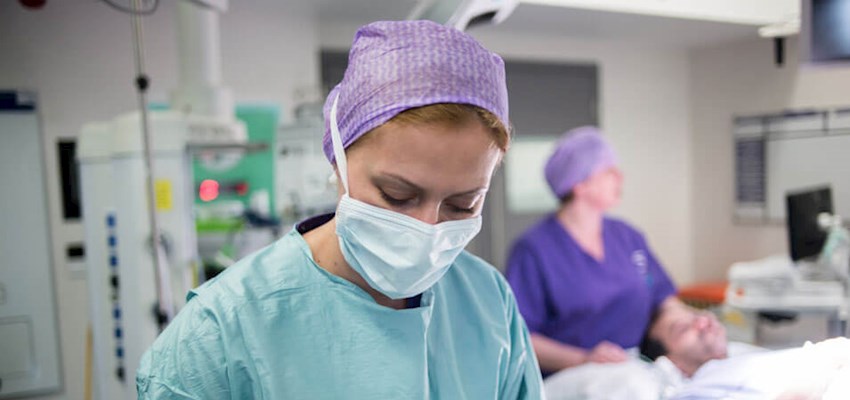Pericardial aspiration
Pericardiocentesis
Pericardial aspiration is a procedure where fluid is drained from around the heart to restore normal heart function
What is pericardiocentesis?
This fluid may be tested for signs of infection or disease, including cancer.
Need to know
-
What happens during pericardial aspiration? icon plus
In a non-emergency setting, pericardial aspiration is done in a specialised cardiac facility known as a catheterisation laboratory. You will lie down on a table for the procedure and may be given a sedative to help you relax. Your consultant will then inject local anaesthetic under your ribs to numb the area over your heart. Next, they'll insert a needle under your ribs into the pericardial sac.
They may use an X-ray or echocardiogram to help see inside your chest as they guide the needle into position, before draining the fluid through a thin flexible tube (catheter). The procedure usually takes less than an hour. -
How to prepare icon plus
Your consultant will explain the procedure to you and answer any questions you have.You may have a blood test, chest X-ray or other heart scan before the procedure to look for the cause of the excess fluid or check your heart rhythm. They may ask you to fast or avoid certain medications beforehand. Like all procedures, there may be some risks or side effects involved. Your consultant will explain these to you.
-
After your aspiration icon plus
You'll be monitored in hospital as you recover after the procedure. If the pericardial fluid was tested for signs of infection, blood or disease, your consultant will speak to you about the results. They will let you know if any further tests or treatment is needed. They'll also let you know when you can return home and get back to your usual routine.
Our cardiologists




Our locations
Our cardiac departments at our hospitals, provide a full comprehensive cardiac service, including outpatient testing, catheter laboratory procedures and inpatient cardiac care.
Request a cardiac appointment
We're happy to help you make an appointment with one of our experienced cardiologists. You can contact us by telephone or email.
Call
020 7079 4344